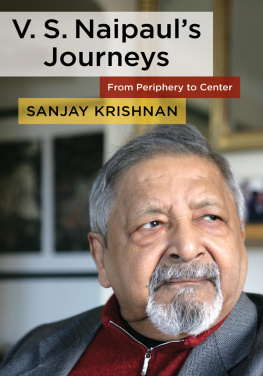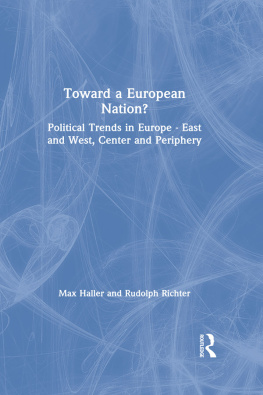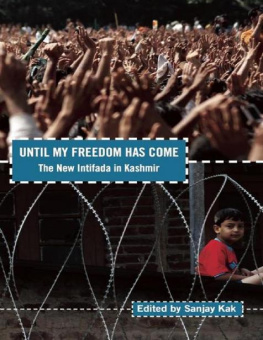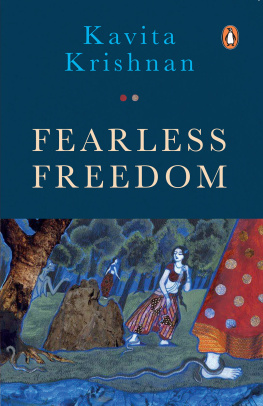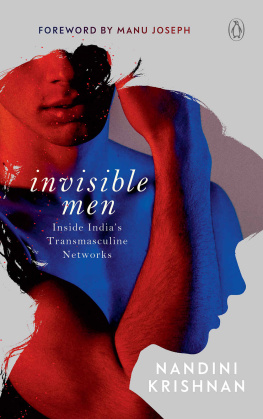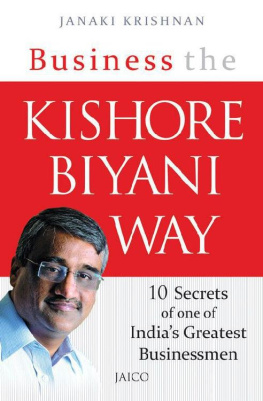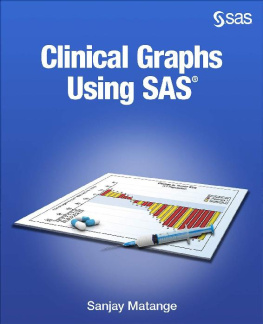Table of Contents
V. S. NAIPAULS JOURNEYS
SANJAY KRISHNAN
V. S. NAIPAULS
JOURNEYS
From Periphery to Center
COLUMBIA UNIVERSITY PRESS
NEW YORK
Columbia University Press wishes to express its appreciation for assistance given by the Boston University Center for the Humanities in the publication of this book
Columbia University Press
Publishers Since 1893
New York Chichester, West Sussex
cup.columbia.edu
Copyright 2020 Columbia University Press
All rights reserved
E-ISBN 978-0-231-55025-3
Library of Congress Cataloging-in-Publication Data
Names: Krishnan, Sanjay, author.
Title: V. S. Naipauls journeys: from periphery to center / Sanjay Krishnan.
Description: New York: Columbia University Press, [2020] | Includes bibliographical references and index.
Identifiers: LCCN 2019025485 (print) | LCCN 2019025486 (e-book) | ISBN 9780231193320 (cloth) | ISBN 9780231550253 (e-book)
Subjects: LCSH: Naipaul, V. S. (Vidiadhar Surajprasad), 19322018Criticism and interpretation.
Classification: LCC PR9272.9.N32 Z7494 2020 (print) | LCC PR9272.9.N32 (e-book) | DDC 823/.914dc23
LC record available at https://lccn.loc.gov/2019025485
LC e-book record available at https://lccn.loc.gov/2019025486
A Columbia University Press E-book.
CUP would be pleased to hear about your reading experience with this e-book at .
Cover design: Milenda Nan Ok Lee
Cover photo: Parkes Photographic Archive / Alamy
CONTENTS
Area: An Area of Darkness
Believers: Among the Believers
Bend: A Bend in the River
Between: Between Father and Son
Beyond: Beyond Belief
Centre: Finding the Centre
Enigma: The Enigma of Arrival
Free: In a Free State
Half: Half a Life
House: A House for Mr Biswas
Loss: The Loss of El Dorado
Magic: Magic Seeds
Masque: The Masque of Africa
Masseur: The Mystic Masseur
Middle: The Middle Passage
Miguel: Miguel Street
Mutinies: India: A Million Mutinies Now
Overcrowded: The Overcrowded Barracoon
Return: Return of Eva Peron
Suffrage: The Suffrage of Elvira
Way: A Way in the World
Wounded: India: A Wounded Civilisation
F EW MODERN writers have divided readers as fiercely as V. S. Naipaul (19322018). During his lifetime, Naipaul won numerous international awards, most notably the Nobel Prize for Literature in 2001. Naipauls admirers point to the formidable scope of his nonfiction and draw attention to the fact that several of his novels have been hailed as masterpieces.
An editorial in the Guardian identified the broader problem as follows: V. S. Naipaul, who has died at 85, exemplified a very current preoccupation: whether an authors personality can be separated from his or her reputation as an artist.
Such divided judgments are further complicated by the different kinds of attention Naipaul commands in many parts of the world. Naipaul was the featured star attraction at international literature festivals held in Bali, Indonesia (at which he failed to appear), and Dhaka, Bangladesh, but withdrew from a writers conference in Turkey in 2010 after a storm of protest in the countrys Islamist media.
For both Cobham-Sander and Ghosh, Naipauls writings shed an acute if discomfiting light on crucial aspects of their own formations. They imply, moreover, that the force of Naipauls literary excavations was linked to his defiance of approved ways of talking about postcolonial societies. In other words, Naipaul had affected them as deeply as he had because of, not despite, his tendency to give offense.
It would not have been possible for Naipaul to have elicited such complex responses from skeptical close readers like Cobham-Sander and Ghosh had he felt mere disdain for his Indian and Trinidadian background or, conversely, had he been exclusively motivated by a desire to win fame and fortune in the metropole. Naipauls writings, therefore, demand a nuanced approach. While it is important to recognize their problematic aspects, I do not think we ought to dismiss them for this reason. In part, this is because much of what is uniquely insightful about Naipauls work is connected to what is problematic about it. It is in this entangled manner that his writings undertake a self-implicating and socially illuminating reflection on global cultures and histories. As such, I do not rely solely on the binarisms of ideology critique (this is the approach adopted by Naipauls detractors) but supplement them with close readings that pay attention to the verbal texturenot least the irony and ambiguityof Naipauls writings.
In order to respond fully to this texture, it is necessary to understand Naipauls personal background. Naipauls ancestors were peasants from North India who had been brought in the late nineteenth century to work as indentured laborers on the sugar plantations of Trinidad,
a small island in the mouth of the great Orinoco river of Venezuela. So Trinidad is not strictly of South America, and not entirely of the Caribbean. It was developed as a New World plantation colony, and when I was born in 1932 it had a population of about 400,000. Of this, about 150,000 were Indians, Hindus and Muslims, nearly all of peasant origin, and nearly all from the Gangetic plain.
Naipauls Indian ancestors were latecomers to the colony and settled in areas that were relatively isolated from the rest of the population. Many Indians served out their five-year terms and then settled in the countryside. Naipauls father, Seepersad, was born to poor Indian peasants in Trinidad in 1906. Although he spoke no English in his early years and had little formal education, Seepersads luck improved when he married into a local family of conservative Hindu landowners called the Capildeos.
Remarkably, Seepersad developed a desire to become a writer. In 1930, he began working as a correspondent on rural Indian issues for the Trinidad Guardian newspaper. Indians were regarded as a backward and violent group by the wider society. In the Indian countryside of my childhood in Trinidad, Naipaul writes, there were many murders and acts of violence, and these acts of violence gave the Trinidad Indians, already separated from the rest of the island by language, religion, and culture, a fearful reputation.
From the start, however, opportunities for his advancement as a writer were limited. Trinidads reading public was very small, and Seepersad lacked the wealth or social connections to take his writerly ambitions further. He died at the age of forty-three a disappointed man. Naipaul was twenty years old and in England at the time.
As a child, Naipaul came to identify with his fathers aspirations. He made Seepersads ambition to become a writer his own. Naipaul was aware of his fathers limitations as a writer, but he also came to believe that Seepersads talents had not been recognized because of his race and class. which was aimed at winning the yearly colonial government scholarship that would enable him to leave the island and pursue his ambitions abroad. Naipaul won the scholarship in 1949. A year later, he left Trinidad to begin his studies at the University of Oxford. In 1955, Naipaul moved to London and married Patricia Hale, a fellow undergraduate from Oxford who was for many years his most important reader.



